

‘Commonsense’: GOP Senators Unveil PROTECT Act
By Matt Meduri
As lawmakers await the upcoming session of the New York State Legislature in Albany this coming January, bills are already hitting the docket, with their sponsors hopeful those measures will be taken up.
Republicans in the Assembly and Senate have long decried the Democratic trifecta’s inability or unwillingness to bring some pieces of legislation to the floor, while other initiatives to roll back the heavily-criticized criminal justice reforms have perennially stalled in negotiations.
Continued on page 5






Christmas Comes to Islip
By Matt Meduri
The well-attended event was filled with local vendors, food trucks, and, of course, the man himself, Santa Claus.
Residents were treated to a variety of vendors selling hand-crafted merchandise and some of Long Island’s best street fair food options across the roundabout around Town Hall, as well as lighting displays, holiday musical stylings, and an opportunity to meet Kris Kringle’s antithesis, Mr. Grinch.


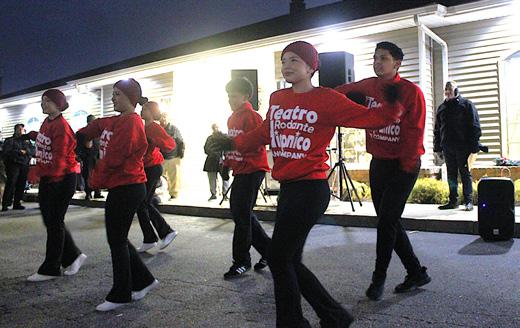
Islip Town Hall’s Christmas Tree (Credit - Matt Meduri)
The Town of Islip held its annual tree lighting ceremony outside of Town Hall on Saturday.
Senator Dean Murray (R-East Patchogue) and Senator Pam Helming (R-Canandaigua) (Credit - Matt Meduri)
WHERE TO FIND OUR PAPER
CENTRAL ISLIP:
Books and BitesDecember 17, 12:00 PM to 1:30 PM
ISLIP:
Bake Sale
December 13, 10:00 AM to 2:00 PM
Ugly Sweater Cookie Swap December 18, 6:00 PM to 7:00 PM
BAY SHORE
AMVETS Post • Boulton Center
Bay Shore Public Library • Leggio’s Deli
EAST ISLIP
American Legion Post • Bayway Arts Center East Islip Gourmet Deli
Harry’s Bagel • Italia Fine Food
Mister Softee Ice Cream
Pat’s Market
ISLIP
American Legion Post • Bagel Boss Bagels & More • Oconee Diner
OAKDALE
The New Idle Hour Deli
50% Cards Store (Wendy’s Shopping Center)
RONKONKOMA
718 Slice Pizzeria – (719 Hawkins Ave)
Airport Diner • America First Warehouse
AMVETS Post 48 • B&B Bagels
B.L.D.’s Restaurant
Hero Express • Pond Deli
American Legion Post
Ronkonkoma Train Station
SAYVILLE
Sayville LIRR Train Station
Sayville American Legion Post
WEST ISLIP
B.F.L./S.P.K. Deli • Best Farms Market
Higbie Bagels • West Islip Bagels West Islip Community Center West Islip Public Library West Islip LIRR Train Station Tower’s Flower
WEST SAYVILLE
LI Maritime Museum
EAST ISLIP:
Adult Pilates - Every Monday and Wednesday , 1:00 PM to 2:00 PM
Play Hooray Family Program - December 15, 10:30 AM to 11:15 AM
Holiday Floral Workshop - December 20, 9:30 AM to 10:30 AM
WEST ISLIP:
Holiday Concert - December 2, 6:30 PM to 7:30 PM
Gingerbread Birdhouse - December 9, 6:15 PM to 7:00 PM
CONNETQUOT:
Dungeons & Dragons for TeensWednesday at 5:30 PM
Holiday Photo FramesDecember 19, 6:00 PM
BAY SHORE:
Gentle Yoga with Kate - Every Monday, 6:00 PM
Cozy Cat Ornaments - December 22, 6:00 PM
SAYVILLE:
Winter Holiday Drum CircleDecember 20, 1:00 PM to 1:45 PM
Kiddie KraftsDecember 27, 2:00 PM to 3:30 PM
BAYPORT:
Holiday Cards for Hospitalized Kids - Dec 9, 4:00 PM to 5:00 PM
BRENTWOOD:
Lip Balm Keychain Craft - December 8, 3:00 PM to 5:00 PM
The Islip Messenger serves Ronkonkoma, Lake Ronkonkoma, Oakdale, Holtsville, West Sayville, Sayville, Holbrook, Patchogue, Bohemia, Islandia and Islip 71 Years of Service to Our Community






Postmaster:
On The Campaign Trail
Thursday, December 11, 2025
Stefanik Campaign Blasts Blakeman, Calls Him ‘Early Christmas Present’ to
By Raheem Soto
Congresswoman Elise Stefanik’s (R-Schuylerville) gubernatorial campaign issued a sharply worded statement Tuesday criticizing Nassau County Executive Bruce Blakeman (R-Atlantic Beach) – who threw his hat in the ring for governor on Tuesday morning - arguing he would weaken Republican prospects in a matchup against Governor Kathy Hochul (D-Hamburg).
In the release, the Stefanik campaign claimed the Congresswoman entered the race with “historic support from voters across the state,” saying she secured backing from both the Republican and Conservative parties within twentyfour hours of her announcement. The campaign emphasized that Stefanik maintains support from a coalition of Republican, Independent, and Democratic voters.
According to the campaign, public polling shows Stefanik holding a commanding lead over Blakeman. The statement asserted that she leads him by 70% in a hypothetical primary, including “beating him soundly on Long Island,” a
region central to Republican turnout in statewide races. The campaign further argued that Stefanik is the strongest candidate to challenge Hochul, noting she has historically outperformed President Donald Trump (R-FL) on the ballot in New York, including Blakeman.
The statement also highlighted Stefanik’s record of flipping a seat that was once long out of reach for Republicans, as well as raising tens of millions of dollars to support GOP candidates across the state and nation. The campaign credited her with leading “the most effective attacks on the worst Governor in America, Kathy Hochul.”
Blakeman, meanwhile, was portrayed by Stefanik’s camp as a liability for Republicans in 2026. The statement accused him of being “anti-2A (the kiss of death Upstate),” and claimed he has previously donated to and supported “corrupt Far Left Democrats.” It also pointed to his history of losses in statewide, federal, and local elections before becoming county executive. The Stefanik campaign went further,
Hochul

to blow Republicans’ best chance to win.”
Blakeman Responds, Says He’s the Candidate Who Can Win
For his part, Blakeman publicly rejected claims that he would undermine the GOP’s chances, instead positioning himself as the Republican best suited to build a broad statewide coalition.
“I’m seeking the Republican and Conservative nominations,” Blakeman said. “We want to put New York first. We want to make it more affordable; we want to make New York safer, and we want to

make people in New York happy again.” Blakeman argued that his electoral performance demonstrates broad appeal, noting he won re-election last month in Nassau County—a politically mixed region—by nearly twelve points.
He framed Nassau County as a microcosm of the state’s electorate.
“We’re going to win because in Nassau County, which is a mirror image of New York state, the demographics are almost the same,” Blakeman said.
The competing statements highlight the early fault lines in what could become one of New York’s most closely watched Republican primaries in years.


The Moloney Family
arguing that “Bruce Blakeman is an early Christmas present to Kathy Hochul as he works
Continued from front cover
Suffolk Matters
‘Commonsense’: GOP Senate Conference Unveils PROTECT Act
The bulk of the Republican Senate Conference convened at the H. Lee Dennison Building in Hauppauge on Tuesday morning to discuss one bill that they hope will see the light of day next year, the Pretrial Risk Overview for Threat Evaluation, Custody, and Treatment (PROTECT) Act.
The bill, S.2282A, sponsored by Senator Pam Helming (R-Canandaigua), aims to reform New York’s bail laws to re-empower judges with the discretion to detain defendants who pose a high risk for reoffense, specifically in terms of violent crime. Should the PROTECT Act become law, judges would use a standardized assessment to make informed decisions on whether a defendant charged with a felony or serious misdemeanor poses any danger to the community, their victims, or even themselves. Judges would be able to order pretrial detention, circumventing the State’s current bail laws.
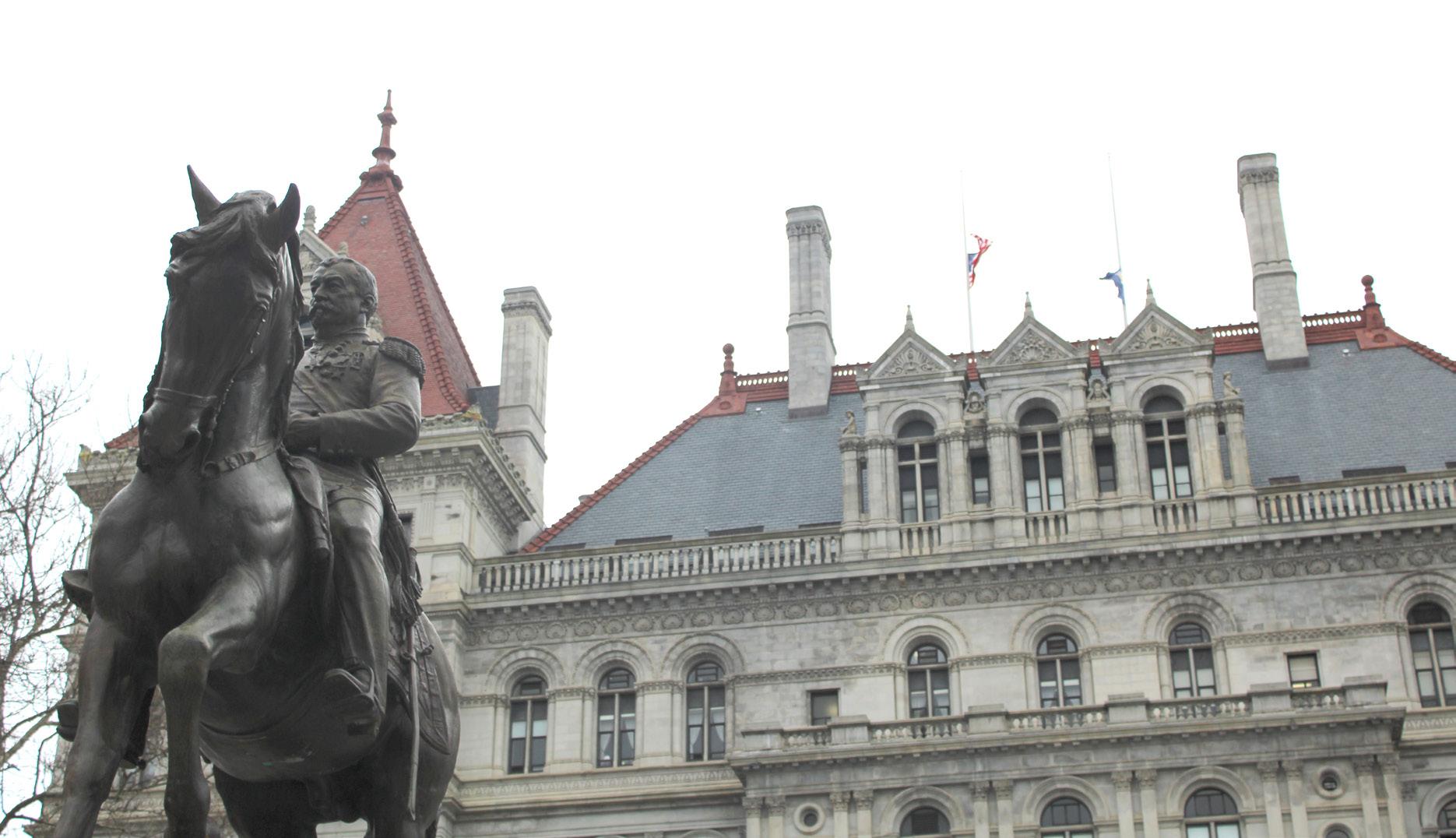
“absolutely relentless in our pursuit of creating a safer and more affordable state for everyone.”
“That includes passing the PROTECT Act to fix the broken bail laws that allow the dangerous repeat offenders to be issued an appearance ticket and released back into our neighborhoods,” said Helming.
Helming shared the story of a young Rochester
That standardized assessment would be developed by professionals at the Department of Criminal Justice (DCJS) to mitigate any potential biases, racial or otherwise.
Defendants’ financial statuses would also not be considered. Instead, defendants’ dangerousness would be prioritized.
Mental health and/or addiction issues are also on the table, as treatment could be suggested in accompaniment with detention.
Pretrial custody decisions would also be required to be made within 48 hours, a component crucial to ensuring timely judicial review.
The bill is being co-sponsored by the entire Republican Conference. Helming was joined in Hauppauge by Suffolk Senators Mario Mattera (R-St. James), Dean Murray (R-East Patchogue), and Alexis Weik (R-Sayville). Additional Republican Senators made the trip from across the Island and even across the State: Senators Patricia CanzoneriFitzpatrick (R-Malverne), Pat Gallivan (R-Elma), Mark Walczyk (R-Watertown), George Borrello (R-Sunset Bay), Steve Chan (R-Bensonhurst), Jake Ashby (R-Castleton-on-Hudson), and Tom O’Mara (R-Big Flats).
Helming added that stakeholders’ and experts’ opinions were “carefully” considered in crafting this legislation - a bipartisan slate of officials including elected sheriffs, not-for-profit leaders, business owners, and religious leaders.
“If I had to sum up the PROTECT Act in one word, it would be ‘commonsense’”, said Helming. “This is a commonsense bill that will decrease the number of victimizations by repeat offenders. That’s something that people across this state are begging for.”
Helming added that the crime crisis and affordability crisis go hand-in-hand, as break-ins and injuries drive up insurance costs and even the costs of some consumer goods.
D.A. Tierney (pictured left) said that as many had “forecasted all along, bail reform has failed.”
“It is a failed experiment that needs to change. Every day, we hear another story of a violent criminal being mandatorily released only to immediately go out and re-offend,” said Tierney. “This is not a coincidence; this is the direct result of prosecutors’ and judges’ inability, due to bail reform, to use their discretion.”
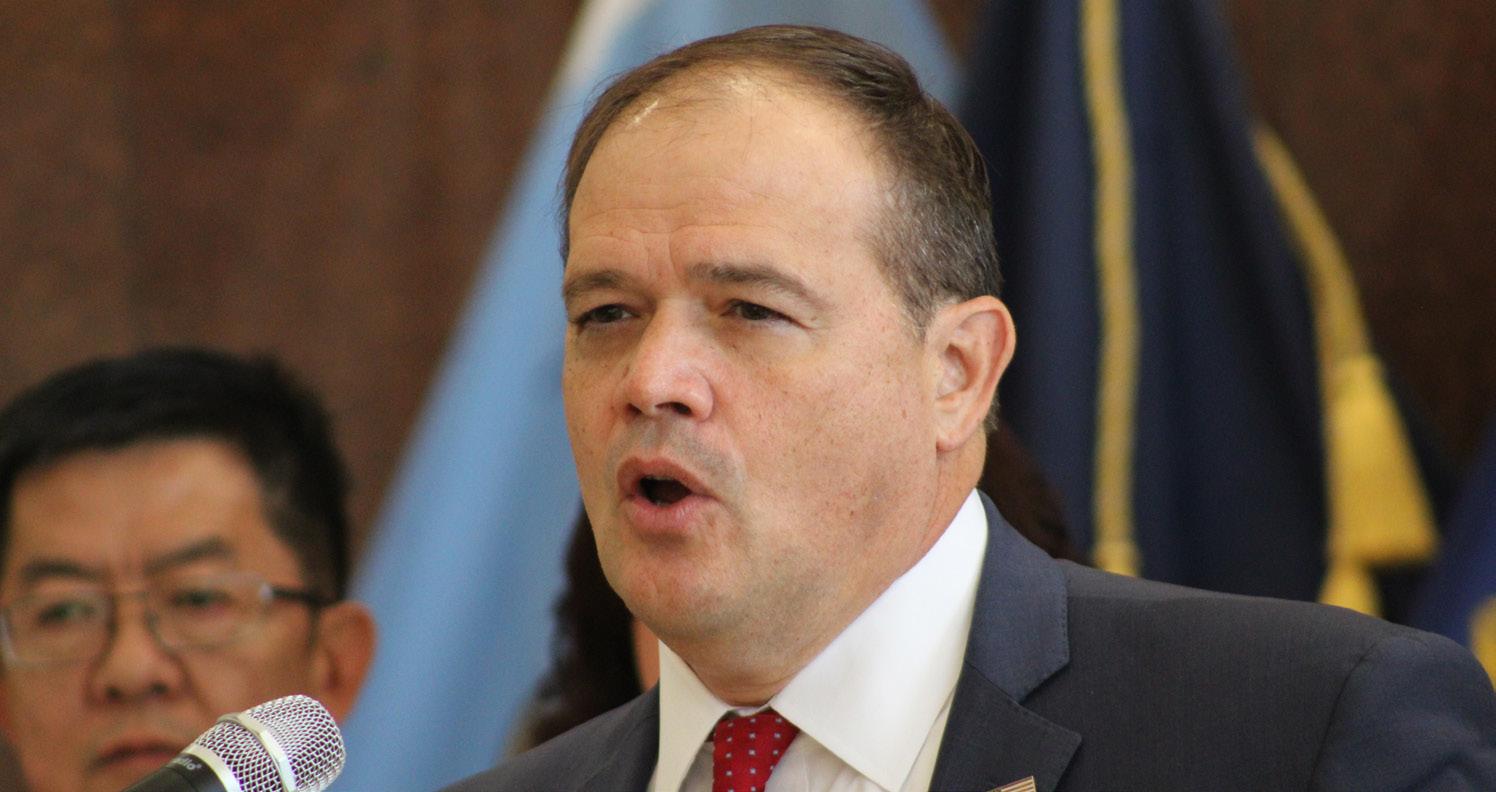

The Senators were joined by Suffolk County Executive Ed Romaine (R-Center Moriches) (pictured above right), County Clerk Vincent Puleo (R-Nesconset), and District Attorney Ray Tierney (R).
“Our State Senators are our first line of defense to ensure that our voices are being heard,” said Romaine. “We understand that bail is difficult for people with limited means, but this should not be the test. The test should be how dangerous a person is to be released.”
Senator Helming, also Chair of the Senate Republican
mother, Abigail Perez, who was stabbed to death, leaving behind her children, aged 11 years, 8 years, and 6 months. Her murderer had previously been charged with assault, obstruction of breathing, and larceny against Perez.
“After that first arrest for attempting to choke Abby to death, guess what happened? He was released pending trial,” said Helming. “So this holiday season, Abby is gone. Her children don’t have a mother. That should have never, ever, ever happened. I blame New York’s bail laws for contributing to Abby’s death.”
Tierney said that his ability to do just that is “severely hampered” by the current laws, even to the point that his assistant D.A.’s “cannot go into court and argue that a clearly dangerous person is, in fact, dangerous.”
Tierney invoked the 2024 Babylon dismemberment case, in which two couples were charged with scattering dismembered body parts across western Suffolk, only to be discovered in parks and community areas. Despite the Suffolk County Police Department having obtained cell site location data and video footage, the judicial system prevented those four offenders from being held.
“It is not about the defendant’s ability to pay cash bail. If we are keeping indigent people in jail as prosecutors, hold us responsible. Hold me, hold my office responsible if that’s what we’re doing. But don’t allow us to not argue dangerousness,” said Tierney, urging citizens to contact their State legislators and Governor Kathy Hochul (D) to pass this bill next year.
Senator Dean Murray invoked a case of a single mother who pulled up to her house with her young son to find the front door ajar and a window screen bent. Upon checking her Ring camera, she found that just five minutes before they returned home, a man was breaking into their house. The defendant was caught shortly thereafter, but was given a desk appearance ticket and released. Later research by the mother found that he had been arrested fourteen times prior, including a three-year stint in State prison for a kidnapping charge.
“That little boy cannot sleep in his own bed at night; he’s petrified,” said Murray. “Had the PROTECT Act been law, that would have never happened. Until this is passed, no one in New York is safe and sound, because that revolving door keeps turning.”
The Blakeman-Stefanik Problem
With Nassau County Executive Bruce Blakeman (R-Atlantic Beach) having formally announced his 2026 gubernatorial campaign, after much speculation, Republicans now face a hurdle in an area that was somewhat expected to be exclusive to the Democratic side: a costly and possibly contentious primary.
As of now, the only other high-profile Republican in the race is Congresswoman Elise Stefanik (R-Schuylerville).
Where is New York on the Political Spectrum?
We’ve covered the evolving electoral landscape in New York for the last couple years at length, and all signs since Lee Zeldin (R-Shirley) came within just six points of becoming governor in 2022 point to a similar theme: New York could very well be an up-and-coming battleground state on the national level.

Since the 2016 presidential election, New York City has shifted about thirty points to the right. Last year, Donald Trump (R-FL) managed to swing NYC so much to the right, in fact, that the Bronx registered as one of the sharpest rightward swings of any county in the nation. New York State itself registered for the largest rightward shift of any stateabout 10.5% more Republican than it was in 2020.
And it wasn’t just a Democratic enthusiasm gap that saw drastically reduced margins for Kamala Harris (D-CA), as it was in California, for instance. While Harris lost some 625,000 votes compared to Joe Biden (D-DE) in New York, Trump picked up almost 330,000 votes compared to his 2020 finish. That result saw Trump come closer to winning New York than Harris did to winning Florida, Texas, or Iowa - shockingly.
Since Zeldin’s near-upset in 2022, it has been more or less understood that if the GOP wants to put New York into perennial play, it will take a few passes of the wrecking ball to see more of the Blue Wall deteriorate. But it won’t be as easy as it was in Michigan, Pennsylvania, or Wisconsin - states with much higher floors for the GOP than New York has had in forty years.
New York is home to 2.9 million registered Republicans, 6.4 million registered Democrats, and 3.3 million registered Blanks. Even if every single registered Republican and Blank backed a GOP candidate for governor, he/she would still lose if every registered Democrat showed up to the polls.
That means the GOP will require crossover support, a considerable number of Blanks, and, ideally, a depressed turnout environment for the Democrats, something they had in 2024, but might not have in 2026, a midterm year shaping up to be at the very least decent for the Party of Jackson.
And with the latest momentum and with New York’s fiscal future hanging in the balance, the stakes couldn’t be higher next year.
So, how does this all fit into the Blakeman-Stefanik Problem, as we’re calling it?
The Liability of Primaries
Primaries are certainly an effective way of gauging the marketplace of ideas and letting the voters of each party select their preferred nominee. We’re in no way downplaying the importance of that.
But in terms of electoral liability, a primary can - and has - called winners and losers before the general election campaign even gets going. A primary can not only drain resources that might be more valuable for the general, but it can also lead the candidates sparring with each other to receive the voters’ favor to the point that ammunition is essentially gift-wrapped for the general election opponent. If New York was a red state, this liability wouldn’t be as problematic, but in a blue state that the GOP has a shot of flipping, every move could count.
And it’s not just a hunch. Stefanik has already labelled Blakeman as an “early Christmas early present to Hochul.
Let the partisan infighting begin, especially at time when Republicans on Capitol Hill

are already starting to break with Trump on certain grounds. That type of intraparty bickering can and has been a significant drag on what would otherwise be smooth momentum.
It’s also a money thing. Candidates who can avoid a primary can get a head start on the general election, and it only benefits one party more when the other has a primary on their hands. Campaign cash also only goes so far in New York, as it’s the priciest media market in the country. Whoever wins the GOP nomination will need every penny going into the general election, as Hochul will invariably have a deeper war chest by the sheer nature of the state.
But Democrats have the primary problem on their end as well. Hochul is currently being challenged by her own handpicked Lieutenant Governor Antonio Delgado (D-Rhinebeck). Delgado, 48, is trailing Hochul by large margins in the polls, but stands to galvanize a younger, more progressive sect of the vote. It’s also easier for us to see a nastier primary on the left than on the right this year, given that Delgado and Hochul have an ostensibly strained relationship and, for Hochul, having her number two gunning for her position isn’t the best look PR-wise.
Should Hochul only emerge from her primary with 60% of the vote or less, she could be in real danger of facing an enthusiasm gap. The gap between Harris and Biden last year could widen into a chasm between Hochul 2026 and Hochul 2022.
Avoiding a Nationalized Race
Not that long ago, statewide elections were much more siloed than they are now. Gubernatorial races are the only races of that nature to have retained that mantle, as they’re more geared towards candidate quality, local issues, and retail politics, rather than national hot-button issues - at least on paper.
However, it’s still common to see gubernatorial races become nationalized, often to the point of one party losing what is otherwise a winnable race. The Trump effect has been on display in several gubernatorial races since the 2018 midterms. A litmus test of Trump loyalty is already a foregone conclusion, however, as both Stefanik and Blakeman are staunch surrogates of the president.
At that juncture, Blanks not keen on the president will look for the candidate delivering the most New York-centric message.
That’s why we call this the Blakeman-Stefanik Problem. We mean no criticism to either candidate, but the ideal scenario would be one in which Stefanik, the frontrunner by a long shot in the GOP primary polls, can essentially campaign for the general all year while Hochul must fight to keep her wing of the party together, especially if city progressives fault her for hindering Mayor-elect Zohran Mamdani’s (D-Astoria) socialist agenda.
Blakeman’s entry into the race, while not entirely unexpected, is something of a curveball in that President Trump cleared the path for Stefanik earlier this year by having Congressman Mike Lawler (R-Pearl River) stand down and seek re-election to his Westchester-based House seat - a swingy seat that backed Harris for president and is tantamount to any chances Republicans have at retaining the House next year.
Trump, at present, has remained reticent on this development, claiming he views both candidates favorably. We find that to be an odd development in and of itself, as Trump had nominated Stefanik to serve as his Ambassador to the United Nations, a position to which she likely would have been soundly confirmed by the Senate, only for her hearing to be beleaguered as it became apparent bigger and better things were on the horizon for the North Country Republican.
We think this is an unforced error on Blakeman’s part. While polls show he has no realistic shot at winning this primary, he only stands to siphon much-needed funds from the candidate who is not only leading handily in the Republican Primary polls, but also as the clearest shot at becoming the first Republican governor of New York since George Pataki (R) was re-elected to a third and final term in 2002.
Does $200 Really Make a Difference?
Last week, we penned an editorial, This Is My New York Christmas List, which listed our desires from the State Legislature next year. At the end, we cheekily said, “if these gifts can’t be fulfilled, cash is fine, we suppose…”
Well, the editor of this fine publication received his long-awaited $200 inflation rebate check in the mail after last week’s issue went to print.
Ask and ye shall receive, we suppose…
The memo on the check reads, “Governor Hochul and the New York State Legislature are providing you with this Inflation Refund as part of broader, ongoing efforts to help address the rising cost of living.”
The average cost of living in New York requires about $4000 to $7000 a month including rent and the index sits at 123.5, 23.5% above the national average. According to consumeraffairs.com, New Yorkers spend $266.40 per week on groceries.
The question for most New Yorkers, will $200 make a difference?
The statistics largely point to a resounding no, as all this check will cover for the
average family is maybe most of one week’s worth of groceries - hardly a dent in the fiscal struggles at all. All the while, more affluent New Yorkers - with Long Island being home to quite a few - won’t even notice the difference. For State-sanctioned inflation rebate checks to make a noticeable difference, they’d need to come in once a month, which is hardly feasible with a state as fiscally mismanaged as ours.
Moreover, the one-time rebates are funded through the State’s sales tax revenue, and Hochul’s logic was to give back to the residents the money they paid in higher sales taxes due to inflation.


Between 2020 and 2024, sales tax receipts surged by $54 billion. We think it would have made more sense to reinvest those funds into State services and infrastructure because in the long run, that’s New York’s greatest problem at the moment.
Of more concern to us, our proviso on last week’s Christmas list was answered. We hope that doesn’t mean the rest of our wishes go unfulfilled come January…
Long Island Public Schools: Supporting ALL Our Youth
By Dr. Timothy Eagen, President, Suffolk County School Superintendents Association
A recent Long Island Life & Politics opinion column written by Steve Levy described our public schools as places where we have “allowed the inmates to run the asylum within our schools.” The column goes on to address America’s academic decline to “an era in the United States where standardized testing was reduced or eliminated, grades were inflated, and standards were lowered.” As an educational leader and President of the Suffolk County School Superintendents Association, I welcome thoughtful dialogue about how to strengthen opportunities and outcomes for all children. In discussions about public education, facts matter
The New York State Education department recently released assessment data for the 2024-2025 school year. Long Island public schools continue to outperform state averages across most academic indicators, as they have for decades. However, stubborn ongoing equity issues have persisted, with many students, particularly from minority and lowincome backgrounds, still falling behind state and national benchmarks. This remains an area of focus across our region, especially as the needs of our most vulnerable students have grown significantly over the past decade.
Additionally, it is essential to recognize the unparalleled role public schools play in shaping communities, supporting families and expanding opportunity. Public schools are not just part of the Long Island story – they are Long Island’s story. They are where generations of residents have learned, worked and grown together. They are deeply woven into the fabric of every community, serving as both educational institutions and community anchors. They reflect the diversity, talent and shared commitment of the communities they serve.
The Promise of Public Education
Later this school year, our nation will commemorate the 250th anniversary of the signing of the Declaration of Independence. The concept of publicly funded education actually predates that milestone by more than a century. From the earliest colonial schools to today’s districts, the idea that all children are entitled to an education in the community where they live has been a defining feature of our nation.
By law, public school districts must enroll every child of compulsory age who resides within their boundaries. This is not a monopoly or an outdated construct it is one of the enduring pillars on which our nation was built. The promise of public education is simple: every child is welcome. There are no applications, no lotteries, and no conditions. Superintendents do not choose their students, families choose their communities, and public schools serve every child who walks through the door.
New York and Long Island Inspire
In my 30-year career as an educator in New York, I have seen New York State Standards
undergo changes and overhauls many times – most recently to Next Generation Standards. I am optimistic about the future of New York, and particularly Long Island. NY Inspires is New York State’s comprehensive plan to overhaul high school education, moving beyond traditional Regents exams (tests which have existed for decades) to focus on real-world skills, a “Portrait of a Graduate” that emphasizes critical thinking, financial literacy, communication skills, and global citizenship, and more flexible pathways to a diploma with major changes beginning for students entering 9th grade in 2027.
Here on Long Island, superintendents are working collaboratively with industry leaders, the military, and our college and university partners to produce our region’s future workforce. Every student should graduate with an actionable plan for college, career, or military service. Educational leaders across Long Island have not chosen decline – they have chosen to adapt, innovate and deepen partnerships to prepare a highly skilled future workforce.
What Will Become of the U.S. Department of Education?
As a Superintendent of Schools, I must navigate politics every day, but I am not partisan. My politics are simple - guided by what will best benefit the community that I serve and the youth that live in that community. I am deeply troubled by the current status of the U.S. Department of Education (USDOE).
I agree with Mr. Levy on this point: our nation must choose a path of academic success. Let me be clear, the fact that the USDOE is currently being led by a former WWF executive is irritating at best. While I appreciated the WWF entertainment as a child, that experience does not qualify someone to lead a Cabinet-level agency responsible for the country’s educational direction. Leadership of the nation’s education system deserves high-caliber, experienced educators.
Additionally, if we look at the countries around the globe (Singapore, South Korea, Japan, Finland, and Switzerland, just to name a few) with the highest academic performance, we see nations with a highly structured and well-developed educational system. Here in the U.S., we are moving towards a model that risks fragmentation, particularly as some federal leaders discuss dismantling the U.S. Department of Education. I agree with Mr. Levy that we should absolutely choose academic success, but achieving it requires stable, informed leadership committed to supporting public schools and the students they serve.
Dr. Timothy Eagen serves as President of the Suffolk County School Superintendents Association and serves as Superintendent of the Kings Park Central School District.

A House Divided Against Itself Cannot Stand
By Anthony Cacciato
It was once said by our first Republican president that a house divided against itself cannot stand.
Earlier this week, Nassau County Executive Bruce Blakeman (R-Atlantic Beach) entered the Republican primary for Governor of New York, a move which has created a rift within the New York GOP, creating a primary which will cost Republicans both money and time which could be spent exposing Governor Kathy Hochul’s (D) shortcomings. Honest discussions about the best way to combat these issues is absolutely necessary, but at a moment where New York is at the tipping point, a strong and united opposition to the failed policies of Kathy Hochul and the New York Democrats is critical.
Congresswoman Elise Stefanik (R-Schuylerville) has proven herself to be the coalition builder and unifier that’s necessary to lead this charge. Having served as Chairwoman of the House Republican Conference, she understands how to unite not just Republicans, but a wide coalition of people who want to bring about positive change. She has also been a champion of conservative principles, holding the line on protecting our Constitutional freedoms, especially our Second Amendment rights. Most importantly, she has been a fighter for transparency and accountability, asking the tough questions to get New Yorkers the answers they deserve. She is the strong and competent leader that Republicans in New York need to hold Kathy Hochul to account on the rising cost of living in New York, failure to combat crime, and bending the knee to extremism in her party.
Bruce Blakeman has done a tremendous job in his role as Nassau County Executive, and his work to help keep Long Island one of the safest places in America has not gone unnoticed or underappreciated by Long Islanders. His electoral success in a
year dominated by Democrats nationwide is nothing to scoff at and signals the trust his constituents place in him to continue delivering for Nassau County, especially with the imminent mayoral administration of Zohran Mamdani (D-Astoria).
Nassau County, which shares a border with Queens, needs a full-time County Executive who will be the first line of defense against the consequences of radical policy decisions and socialist economics. Any governor’s success depends on strong partners in local government, and Bruce Blakeman is the type of County Executive that a future Governor Stefanik will need to be successful.
Democrats have already thrown themselves into a bloody primary, with Lieutenant Governor Antonio Delgado (D-Rhinebeck) challenging his boss for the Democratic nomination for governor. Instead of wasting time bringing each other down, Republicans must use this opportunity to join the growing chorus of voices which are calling out Kathy Hochul for her failure to deliver for New Yorkers. Now is the time to lay out a commonsense alternative that will deliver affordability, safety, and strong leadership for New Yorkers. Congresswoman Stefanik has proven herself to be the standard bearer for this fight, and we must rally behind her to save our state.
Anthony Cacciato is a senior at Carnegie Mellon University studying Economics and Political Science. He is a lifelong Suffolk County resident and currently resides in Huntington.
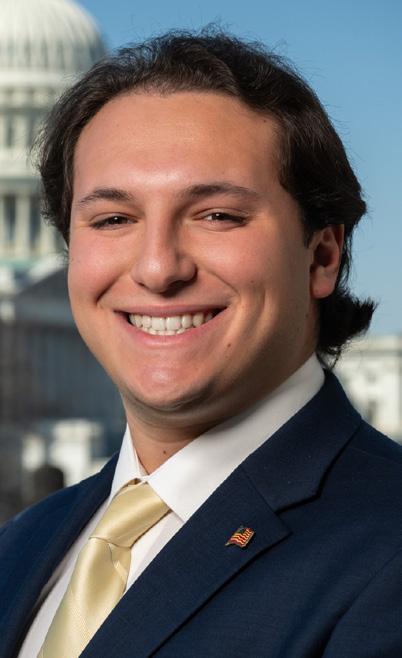
NYSDOE Blocks Bathroom Policies in Massapequa and Locust Valley Schools
By Madison Warren
Massapequa and Locust Valley School Districts have been two schools in recent weeks whose transgenderbathroom and locker-room policy was blocked by the New York State Department of Education (DOE) and its commissioner, Betty Rosa.
Both Massapequa and Locust Valley have adopted policies requiring students to use bathrooms and locker rooms based on the sex assigned at birth. But those policies were quickly questioned and drew legal challenge from the New York Civil Liberties Union (NYCLU). They argued that the policy violated state civil rights and education laws protecting gender identity and expression.

The decisions by New York State Education Commissioner Betty Rosa to block bathroom and locker-room policies in Massapequa and Locust Valley show that the State is firmly reinforcing its legal protections for transgender students. By intervening, New York is signaling that local school boards cannot override statewide nondiscrimination policies, and that transgender students’ access, safety, and dignity must be upheld.
The State Education Department said the policies conflicted with New York’s Human Rights Law, the Dignity for All Students Act, and the 2019 Gender Expression Non-Discrimination Act (GENDA). The state argues the laws collectively prohibit discrimination based on gender identity or expression and require schools to treat transgender students according to their affirmed gender. The department also said the districts’ policies could expose them to legal liability and violate interpretations of federal Title IX.
These two districts are the only ones so far that have been publicly blocked under State intervention. These two cases are part of a nationwide wave of disputes over transgender student rights, school bathroom and locker room access, and how schools balance local, state, and federal law.



Thursday, December 18






“This is another fine example of my NYC Democrat majority colleagues in Albany not fully anticipating the consequences of enacting laws which purport to protect New Yorkers, but in practice will prevent our schools from separating our male and female students in their bathrooms, locker rooms, and showers,” said Assemblyman Doug Smith (R-Holbrook), Ranking Republican Member of the Assembly’s Education Committee. “The language of the law is important, and the State Education Department is being put in an impossible position by far-left Democrat politicians. It’s time we allow the State Education Department to get back to providing academic support services to our schools and students.”
11 a.m. to 2 p.m. ssemb yma Dou m th s ce eterans e oria i h ay, uite on on o a, Toy Drive Collections Accepted Monday-Friday through December 18. All donations go to ECLI-VIBES Read about their mission at eclivibes.org/services

through an Amazon Gift Registry and delivered to Assemblyman Doug Smith’s Ofce. Simply select “Assemblyman Doug Smith” as the shipping address!










Assemblyman Mike Fitzpatrick (R-St. James), who also opposes the state’s intervention, argued that the decision reflects what he considers an overly progressive agenda from the Board of Regents and Commissioner Rosa.
“I strongly disagree,” Fitzpatrick said. “This is a very left-wing, very uberprogressive Board of Regents. The districts are governed by their communities. We believe in local control, and these two communities believe that there should be boys’ and girls’ bathrooms. But she has overruled them and injected her uber-progressive views.”
As the legal challenges continue, both sides remain firm in their positions, with state officials emphasizing New York’s commitment to protecting transgender students’ rights. At the same time, some lawmakers and community members argue for local control over school policies. For now, the commissioner’s orders remain in effect, and both districts must comply with state nondiscrimination rules while the courts and education agencies determine the next steps. The outcome of these cases could have lasting implications for how school districts across New York and potentially the nation navigates the intersection of student rights, community values, and local control.
This Week Today
Thursday, December 11, 2025
National, State, and Local Temperature Checks
By Matt Meduri
National
On Tuesday night, Republicans won a cruThe 2026 U.S. Senate race in Texas is gearing up to be a fiercely contested battleground.
Senator John Cornyn (R-TX) is seeking a fifth term but is facing a primary from Texas Attorney General Ken Paxton (R). Paxton has slammed Cornyn over the years for a voting record that he believes is in line with a bygone era of Republican politics, including Cornyn’s support for U.S. aid to Ukraine, supporting the Development, Relief, and Education for Alien Minors (DREAM) Act, and for a bipartisan gun safety bill passed in the wake of the Uvalde school shooting in 2022.
Meanwhile, Cornyn has hit Paxton on his character flaws and legal troubles, including Paxton’s 2023 impeachment by the Republican-controlled Texas House, which resulted in his acquittal in the Republican-led Texas Senate. Paxton was impeached for allegedly using his office to help a political donor and friend who was under federal investigation. Charges included bribery, obstruction of justice, and misuse of public funds.
The field to knock Cornyn off continues to grow, with eight other candidates vying for the Republican nomination as of press time. One of them is Congressman Wesley Hunt (R, TX-38), who was elected to the suburban Houston seat in 2022.
But the bigger news this week is on the Democratic side of the contest. Former Congressman Colin Allred (DTX) had been mounting a campaign as a serious contender. Allred, a former NFL linebacker, flipped a suburban Dallas seat blue in the 2018 midterms. He forewent re-election in 2024 to run against Senator Ted Cruz (R-TX), coming up short by about nine points.
Allred, however, this week suspended his campaign in what many see as a move to help the prospects of Congresswoman Jasmine Crockett (D, TX30) (pictured right), who filed paperwork to run on deadline day in Texas. The Dallas Democrat was elected to the seat in 2022 and has more recently been one of the GOP’s and President Donald Trump’s (R-FL) most prominent punching bags. She recently received scrutiny for accusing several former and incumbent members of Congress, including EPA Administrator Lee Zeldin (R-Shirley), of taking donations from Jeffrey Epstein. FEC filings later showed that the Jeffrey Epstein to whom Crockett had referred was an entirely different Epstein from
the serial pedophile and sex trafficker. She later asserted that she never said it was the notorious Epstein.
Allred’s suspension effectively clears the field for Crockett, who is joined by only four other Democrats who have filed paperwork, none of them as highprofile as herself or Allred.
No Democrat has won a Senate race in Texas since Lloyd Bentsen was re-elected in 1988. Bentsen notably served as Secretary of the Treasury under Bill Clinton (D-AR) and as Michael Dukakis’ (D-MA) running mate in the 1988 presidential election.
Democrats came excruciatingly close to breaking the losing streak in 2018, when then-Congressman Beto O’Rourke (D-TX) came just two points away from defeating Ted Cruz.
and special state legislative elections held across the country, and the most stunning upset was in Miami. Although mayors are elected on a nonpartisan basis, Eileen Higgins, a registered Democrat, became the first Democrat to be elected mayor of Miami in thirty years. Higgins defeated Republican Emilio Gonzalez 59.5%-40.5%.
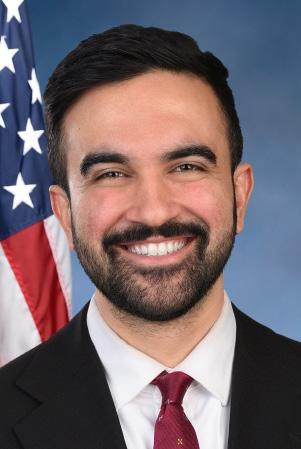
In Maine, Governor Janet Mills (D-ME) was dealt a polling blow this week in her quest to take on Senator Susan Collins (R-ME) in next year’s Senate race.
Mills, the two-term governor of Maine first elected in 2018, was found, by Z to A Research, down twenty points to her Democratic challenger Graham Platner (D). Platner, a combat Veteran turned oyster farmer, received criticism for having been seen with a tattoo of a totenkopf, a Nazi symbol. He received the ink in Croatia in 2007. He said that he only recently understood its Nazi associations and had it covered with a new tattoo.
The same poll that found Platner leading Mills 58%-38% also found that 77% of voters younger than 50 would vote for him.

Maine is a crucial state for any plausible Democratic majority in the upper chamber next year. The current 53-47 majority held by the Republicans requires a four-seat net gain by the Democrats in order to take control outright. With a thin battleground at-large, Democrats ousting Washington’s most notable maverick in Susan Collins remains a must.
But Maine’s idiosyncratic voting patterns make for a don’t-celebratetoo-early setting, as Democrats seemed poised to topple Collins in 2020, only for the moderate Republican to win a fifth term by eight points. Collins is the only Republican to represent a state in the Senate in a state that went to both Kamala Harris (D-CA) and Joe Biden (DDE).
December 9 saw mayoral runoffs
Republicans also underperformed in a Tampa-based Senate district, which they held, and in a Boynton Beachbased House district, which Democrats held.
Democrats flipped a State House seat in Athens, Georgia, by a narrow margin. Eric Gisler (D) was elected 50.9% to 49.2% over Mack Guest IV (R). The Republican predecessor to this seat had been elected with 61% of the vote in 2024.
Republicans held a rural northcentral Iowa State House seat with 70% of the vote, although it represents a 13% drop from their 2024 margin.
State
New York City Mayor-elect Zohran Mamdani (D-Astoria) (pictured above) is assembling his transition team and naming appointments for his term set to begin on January 1, 2026.
One of his most prominent picks is Dean Fuleihan as First Deputy Mayor. Fuleihan, 74, will be a notable foil to Mamdani’s youth and perceived inexperience for which he received criticism on the campaign trail. Fuleihan served as First Deputy Mayor to former Mayor Bill de Blasio.
Mamdani has also tapped Elle Bisgaard-Church as his Chief of Staff. Bisgaard-Church, 34, served as Mamdani’s chief of staff during his time in the New York State Assembly and as his campaign manager for the mayoralty. She, like Mamdani, is also a member of the Democratic Socialists of America (DSA).
Mamdani faced one question more often than perhaps most others, “would you retain Jessica Tisch as NYPD Commissioner?”
Tisch is set to remain in the Mamdani Administration. The threetime commissioner and member of a notable billionaire family will likely see differences on the issue of policing with her boss.
However, one of Mamdani’s choices is raising eyebrows more than his other choices.
Mysonne Linen, 49, has been tapped as a criminal justice advisor. Linen served seven years in State prison for
armed robbery. The Bronx activist and rapper was found guilty of two felony robberies in the late 1990s. The 1997 robbery was taxi driver Joseph Eziri, while the 1998 stick-up was of another taxi driver Francisco Monsanto.
Linen was sentenced to seven-tofourteen years and was paroled in July 2006.
“This is a testament to our decades of work advocating on behalf of black and brown communities and our expertise in gun violence prevention, legislative advocacy and criminal justice reform,” said Linen on Instagram. “We are building something different.”
Linen founded Rising Kings, a nonprofit that teaches classes to Rikers Island inmates, and later partnered with activist and Arab American Association of New York executive director Linda Sarsour to found Until Freedom, a social justice activism group.
Linen was also seen in 2016 posing with Nation of Islam leader Louis Farrakhan.
Additionally, Mamdani has appointed New York City DSA co-chairs Gustavo Gordillo and Grace Mausser to roles in economic development and workforce development and small businesses and minority and womenowned businesses, respectively.
Local
Suffolk County Executive Ed Romaine (R-Center Moriches) has announced the launch of a commemorative book in anticipation of the Suffolk 250 celebrations, Long Island’s Path to Independence: a Revolutionary Historical Passport. The book is set to serve as an “interactive guide for the County’s historic sites ahead of the 250th anniversary of the signing of the Declaration of Independence,” according to the County. Residents are invited to explore Revolutionary War sites, 18th-Century landmarks, and other historic exhibits in both Suffolk and Nassau counties.
“The launch of this book serves as a field guide to the history of Suffolk County, a history that goes all the way back to this being the first English-speaking settlement,” said Romaine in a statement. “The Suffolk 250 initiative is a unique opportunity to further educate our residents while growing our regional tourism industry. We encourage our residents of all ages to explore the various sites in Suffolk County dating back to the Revolutionary War.”
The book is available print-ondemand at a non-profit price of $8.32 on Amazon. A free PDF is also available at www.suffolk250.org or on the Suffolk250 app.
Bergin’s Brief - November 2025
Suffolk County Legislator Trish Bergin was honored to present the Central Islip Fire Department’s Junior Hoboes with certificates to celebrate winning the New York State Champions. Not only did their skills earn them this achievement, but their dedication, teamwork and passion all season drove them to the finish line.
Congratulations to the coaches and athletes!
Legislator Bergin presented Henry Melchiona with the 2025 Non-Profit Volunteer of the Year award on November 20. Henry began his journey with the St. Joseph’s CYO-Ronkonkoma when his children started attending the St. Joseph School. Henry volunteered to help fundraise for the school’s student/parent association by hosting a dinner dance, which was a big hit.

Soon after, Henry began helping with a new sports program called CYO, which included track and field, baseball, basketball, cheer and band. However, costs for sports equipment and uniforms put a strain on the program, until Henry put together another massive dinner dance. The success of the fundraiser led to a few fundraisers a year to keep the program afloat, allowing for over 1,000 children to continue to participate in sports. 55 years later, St. Joseph’s CYO has seen over 100,000 young athletes and 2,000 currently enrolled. Henry was known for making the impossible possible while being inclusive and equitable and running every sport with the motto, “United in Sportsmanship.” His efforts within his community have provided opportunities for all students and families, fostering unity, empowerment and resilience. Today, Henry still serves as the Chairman of the St. Joseph’s CYO-Ronkonkoma. Thank you for all you do, Henry!
In honor of Veterans Day, Sal Napolitano was honored at the annual Ronkonkoma Middle School Veterans Day Assembly for his military and community service. After graduating high school, Sal enlisted in the United States Air Force. He was stationed in Thailand, where his dedication and leadership earned him a promotion to Staff Sergeant. After completing his active military service, he earned his bachelor’s and master’s degrees and started his career and family.
In addition, Sal remained deeply committed to his community with St. Joseph’s CYO, serving as President of the Greater Ronkonkoma Civic Association and volunteering for the Connetquot School District. One of Sal’s proudest volunteer endeavors has been his involvement with the “Adopt-A-Senior” program at Connetquot High School. Through this, he mentors high school seniors preparing to enlist in the military by offering guidance and support. Thank you for your service, Sal! Congratulations.
David Palmer was honored on Veterans Day for his service and for celebrating his 100th birthday. His active duty began on January 24, 1944, with the United States Army. During his tour, he rose from the rank of Private to Technician 5th grade and earned the title of Expert Rifle and Carbine Gunner. For commendable contributions to the war effort, he was awarded a Good Conduct Medal, European African Middle Eastern Theater Campaign Ribbon, Army Occupation Medal, Germany Victory Medal and the World War II Victory Medal.
After his service, Mr. Palmer joined American Legion Rusy Bohm Post 411 in June 1991. A testament to 33 years of exemplary participation, he has served in various officer and committee positions and has received numerous Legion citations. He was deservingly appointed Grand Marshal for the Post’s Town of Islip’s Memorial Day parade in 2023 and remains an active, contributing and very well-respected member of the post – rarely missing patriotic ceremonies. Congratulations, David!
Legislator Trish Bergin (R-East Islip) has represented the Tenth District in the Suffolk County Legislature since 2022. The Tenth District includes East Islip, Great River, Islandia, Islip Terrace, North Great River, Ronkonkoma, and parts of Central Islip and Hauppauge.
Legislator Bergin serves as the Chair of the Seniors and Human Services Committee, Vice Chair of Economic Development, Planning, and Housing, Vice Chair of the Government Operations, Personnel, and Information Technology Committee, and serves on the Committees on Education and Diversity; and Labor and Consumer Affairs.
The Tenth District office is located at 44 East Main Street in East Islip and can be reached at 631-854-0940. Continued from
Christmas Comes to Islip

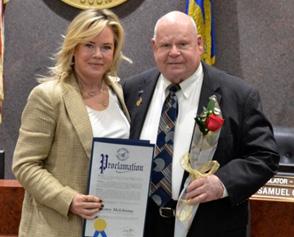




The Necessary Standard for American Education
The Byrd Rule
By Matt Meduri
While we’ve touched on the Byrd Rule in this column, we’re taking a deeper dive into it this week.
What is the Byrd Rule?
The Byrd Rule is a Senate-specific rule under Section 313 of the Congressional Budget Act. Its purpose is to block “extraneous” provisions from budget reconciliation bills and to ensure that only budget-related matters are included in the process.
Reconciliation is a fast-track budgeting process that allows Congress to pass legislation affecting spending, revenues, and the debt limits with a simple majority (51 votes) as opposed to the higher hurdle of a 60-vote threshold. While making it easier to enact major fiscal policy, such as spending bills and tax cuts, with limited time for debate, it makes it more difficult for the Senate to place non-budgetary items in the reconciliation bills.
The reconciliation procedure was established by the Congressional Budget Act of 1974, with the long-term focus being reducing the deficit, generating revenue, and in some cases, increasing spending in certain areas. While reconciliation is an optional procedure, it has been used by Congress in most of its sessions. Twenty-three reconciliation bills have become law while just four have been vetoed.
History and Origin
This column will seek to address the long-forgotten concept of civics and how it relates to American government in general, from the federal level to the local level. This column will explore Constitutional rights, the inner workings of government, the electoral process, and the obligations and privileges of citizens.
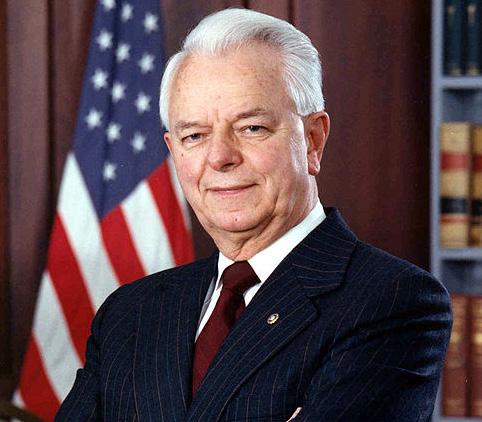
upholds it. A tie sustains the presiding officer’s ruling. Points of order are crucial when debating budgetary matters, especially when it comes to the Byrd Rule.
The Six Cases
The rule is named for Senator Robert Byrd (D-WV) (pictured above right), who represented West Virginia in the Senate from 1959 until his death in 2010. Byrd proposed the measure, which became law in 1985 and amended in 1990.
Its purpose was to curtail abuse of the budgeting process, specifically as committees were inserting unrelated policy changes, which typically warrant extensive legislative debate, into fiscal measures which are designed to be passed on a simple-majority basis. The loophole also worked around policy proposals that could possibly face a filibuster, a point of extensive and virtually limitless debate until cloture - the cessation of debate to take up the measure as is - is invoked. The loophole also gave committees more power in passing measures that they favored, avoiding the scrutiny of the full Senate.
Points of Order
Points of order are formal objections raised by a Senator who finds that the Senate’s rules and procedures are violated. Points of order are required in the Senate as the presiding officer does not proactively enforce the rules, unlike the U.S. House.
The Senator in question can explain the perceived violation, after which the presiding officer - usually the vice president or president pro tempore - decides if the point is “well taken” (valid) or not, often in consultation with the Senate Parliamentarian.
The point of order is usually debated thereafter by the Senate and voted upon, while other Senators can challenge the presiding officer’s decision. Points of order require a three-fifths vote to be waived on budgetary matters.
A dissenting Senator can also disagree with the ruling of the presiding officer, asking for an appeal. The presiding officer then asks the Senate to vote on the fate of the point of order. A majority vote to not sustain the presiding officer’s decision overturns the ruling, while a vote to sustain the presiding officer’s ruling
The Byrd Rule outlines six cases where a provision is defined as “extraneous” and is then considered ineligible for reconciliation. A provision must fit at least one case in order to be ineligible. Those cases are:
1. If the provision does not produce a change in outlays (spending) or revenues.
The cost estimate of a measure provides the first indication of whether the measure in question will produce a change to the outlays or revenues. However, measures that are “terms or conditions” of a provision that does affect outlays and revenues are admissible in a reconciliation bill under the Byrd Rule. In other words, a stipulation, while not intrinsically budgetary itself, could affect a budgetary matter. An example of extraneous matter under this test would be an opinion, statement, or declaration by Congress. Called Sense of Congress language, these might be suggestions for action to the president without a mandate for action. Since these are unrelated to budgeting matters, they’re considered ineligible under the Byrd Rule.
2. If the provision produces an outlay increase or revenue increase when the specified committee is not compliant with its instructions.
Compliance in this case, as it relates to budgeting, means that a committee must find savings at least equal to the target instruction - called a “floor.” Instructions to increase a deficit is called a “ceiling.” A committee found to be in compliance with its instructions is one that recommends legislation that does not change spending or revenue to fall outside instructions by more than 20% of the sum of both the floor and ceiling and the total changes are not less than the total recommended.
The Economic Policy Innovation Center (EPIC) lists the following example. If a committee is instructed to reduce a deficit by $10 billion and pitches a measure to decrease spending by $1 billion and increase revenue by $9 billion, for a total deficit reduction of $10 billion, it is in compliance with case 2 of the Byrd Rule.
3. If the provision is outside the jurisdiction of the committee that submitted the provision for inclusion in the reconciliation process.
The Presiding Officer determines jurisdiction in
consultation with the Senate Parliamentarian. If a measure is not within the jurisdiction of the committee in question, it is stricken from consideration. In that vein, if a subsection of a measure is not within a committee’s scope, the subsection is stricken, not the rest of the section, as long as the remainder of the section is compliant with jurisdiction.
4. If the provision creates a change in outlays or revenues that is “merely incidental” to nonbudgetary aspects of the provision.
This case has changed throughout the years and the precedents set by the Senate. While no formal test exists, the Parliamentarian generally weighs whether a provision is a policy change that “substantially” outweighs budgetary impact of that change. An example listed by EPIC is that of a 2021 point of order against a provision to increase the federal minimum wage. The Congressional Budget Office’s (CBO) cost estimate for that provision found that the policy would “indirectly affect the budget.”
However, measures whose budgetary effects that the CBO cannot estimate do not necessarily violate the “merely incidental” test.
5. If the provision would increase the deficit for a fiscal year beyond the fiscal years covered by the reconciliation bill in question.
This deals with sunset provisions primarily. Sunset provisions are expirations for budgetary measures that are determined at their time of passage. Further measures to lengthen the sunset are required when the expiration date nears. These are commonly seen in tax cuts/benefits, such as the State and Local Tax (SALT) deductions recently secured under the Big Beautiful Bill (BBB).
This case says that measures are stricken under the Byrd Rule if the sunset provision of a reconciliation bill increases the deficit in the years beyond its window. Creative budgeting and rearranging of the tax structure in future sessions of Congress can avoid this chokepoint.
6. If the provision aims to make changes to Social Security.
Old Age, Survivor, and Disability Insurance (OASDI), the formal name for Social Security, is off the table when it comes to reconciliation bills under Section 310(g) of the Congressional Budget Act. The reason for this is major chances to OASDI are often a bigger picture and could be policy-related, so opposed to the typical budgetary process. If a Senator raises a point of order against one offending provision, the rest of the bill could pass muster. However, if a Senator raises a point of order against the entire measure pursuant to Section 310(g), the entire bill will be sent back to committee and cannot be sent back to the floor without considerable changes.
Medicare and other non-OASDI programs established under the Social Security Act are not covered by this test under the Byrd Rule.
While the Byrd Rule does not automatically prevent the inclusion of extraneous provisions, it does require Senators to remove those provisions by raising procedural objections. Provisions believed to be extraneous are considered “Byrd-able”, which are then ruled upon by the Senate presiding officer and usually with the advice of the Senate Parliamentarian. Sixty votes are required to overturn the ruling.
As an interesting side note, while the Vice President can overrule the Parliamentarian, this has not been done on budgetary matters since 1975. The vice president has, however, overruled the Parliamentarian on judicial nominations as recently as 2013 and 2017.
Feliz Navidad
Christmas Comes to Brentwood
By Matt Meduri
The hamlet of Brentwood just got a little more festive, as Legislator Sam Gonzalez (D-Brentwood Pictured right) hosted his third annual Christmas tree lighting in the heart of town on Sunday afternoon.
“What I want for Christmas is for the community to be at peace,” Gonzalez told The Messenger. “I want to see some growth in their businesses. My community is losing anywhere between 25% to 35% of their business. Restaurants are hurting, the supermarkets are hurting, everyone is afraid to come out. We all struggle, but it’s been nothing like this.”
Over the last few years, Brentwood has been coming online with increased public safety measures, park renovations - notably the significant cleanup at Roberto Clemente Park - and public works projects set for the near future.
“God willing, for 2027-28, we can begin construction for the sewer line,” said Gonzalez. “The Town of Islip can apply for the $10 million downtown revitalization grant and we can begin to put Brentwood on the map.”
Gonzalez also recognized the Suffolk County Police Department and Third Precinct Commander Michael Kelly for their mobilizations to make sure the area is secure, namely in moving the bus stop on Washington Avenue to the LIRR Brentwood Station.
“I want to open up a Brentwood village, with ice skating in Ross Park during this time of year, with vibrant music and attractions,” said Gonzalez. “That’s my Christmas wish.”
Gonzalez, fresh off a re-election win in Suffolk County’s Ninth Legislative District, says that it’s “another opportunity to work” for his constituents.
The Legislator kicked off the event by telling
community members that they were “completely safe” at the event, stating in Spanish [translated], “I don’t let anything happen to anyone, and what I’m talking about are the shameless feds that are out there. That’s not going to happen here tonight.”
The event began with the color guard, posted by Boy Scout Troop 371, followed by a stunning rendition of the National Anthem by Christopher, of the Brentwood High School Concert Choir, and holiday favorites Angels We Have Heard on High, The First Noel, and Jingle Bells performed by the choir en masse.
Hot chocolates were enjoyed by officers of the Suffolk County Sheriff’s Department and services and information were offered by Youth Enrichment Services (YES), a powerful force in the Town of Islip for keeping the youth off the streets, off drugs and substances, and into vocational training and mental health help as needed.
Shyla Silva, a sophomore of Smithtown High School West, was recently crowned Miss Long Island Teen 2026. Silva delivered remarks before the Brentwood Fire Department arrived with a special guest.
“I’ve been supported by this community for all these years since I was very little. It’s been so amazing to know that I can come to you for help and we have each other’s backs,” said Silva. “This holiday season is a time to hold on to your faith and family.”
Intricate Latin dances were then performed by students of El Teatro Rodarte Hispanico Dance Company, based in Central Islip, as Santa Claus descended on the scene to help light the tree, adorned with wooden ornaments made by students in the district.



Miller & Caggiano, LLP Donates $32K Polaris to Ocean Beach Police
Residents just got a little safer and Ocean Beach Police Department’s response time is quicker thanks to a generous donation from Miller and Caggiano, LLP, which donated a fully outfitted Polaris to the department.
“It is a great help because the Polaris can go places other vehicles can’t go as easily,” says Chief George Hesse, who runs a department of four full-time, 38 part-time, and 10 civilian staffers. “We spend a lot of time in the water and on sand, and a golf cart and some cars wouldn’t do as well as the Polaris. It also is great moving through a crowd or on our narrow paths.”
The Polaris has been outfitted with sirens, lights and appropriate police decals.
“One of the nice things is that it cuts our response time to the beach to minutes,” explains Hesse, who adds that they patrol around 600 homes and 32 businesses. “We were totally taken by surprise by the generous donation.”
Greg Caggiano, founding partner of Miller & Caggiano, LLP, was in a conversation with Chief Hesse when the discussion turned to transportation.
“When we heard about the need, we wanted to help,” Mr. Caggiano explains of donating a fully outfitted Polaris. “Providing them with what they need to do their job just makes sense.”
Todd C. Miller and Greg Caggiano have dedicated their entire careers as attorneys to assisting injured and disabled workers. They merged their respective practices in 2004. The firm’s practice areas include New York State Workers’ Compensation, Personal Injury, Social Security Disability and NYS Disability Retirement. Miller & Caggiano, LLP also handles motor vehicle, premises, slip-and-fall and construction accidents.
Ocean Beach Mayor James S. Mallot is also singing the praises of the donation.
“Our guys can’t live without it,” Mallot says. “Polaris is one of the top makers of all-terrain vehicles. They’re using it every day.”

16 Local History
Thursday, December 11, 2025
250 Year Celebration Begins in Lake Ronkonkoma
By Ellyn Okvist, B.Sc.
We have waited 250 years to celebrate our great Country and Lake Ronkonkoma is right up there with the upcoming 2026.
We will reflect on so many different ways to celebrate, and we are proud to say the first has started. The Boy Scouts of Troop #216 have asked for a special program to help them become leaders of the future, meaning to have them learn a specific and monumental event that they will remember for a lifetime. Debra Cristino, the Scout leader of Troop #216 outlined a program that is not only important to the entire United States, but to Long Island just seven miles away from Lake Ronkonkoma.
Once Debra brought her outline to Ellyn Okvist, it became apparent that this was going to be a success. Meeting with Dana Lynn Zotter, local author of the book “Kayleigh & Conner Detectives Inc., and King the Spy Dog”, a curriculum design was created. The final part of the design will be an exclusive tour and educational talk given by one of the master historians in Setauket, Mr. Beverly Tyler.

Last evening the scouts were introduced to the actual curriculum, and explanation of the same. A few knew of the Culper Spy Ring, and those that did not were more than anxious to learn about it. With their Codes, they will write a “secret” letter to George Washington giving him advice and possible maneuvers to help the colonies. Many expressed their need to write with disappearing ink, which will be a part of the program. They read an actual letter that George Washington had written to Benjamin Tallmadge and saw partial Code in that letter. The scouts sparked an immediate interest in having a trip to Stony Brook University Library, and viewing the actual letters that George Washington wrote from their collection.
The second part of the program will be to read the acclaimed book written by Dana Lynn Zotter “Spy Dog”. Although not 100% historic, it allows children in the age group to become acquainted with the Culper Spy Ring by reading actual adventures of children and Dana’s book has received outstanding reviews.
Luckily, her book has been easily adapted into the program and will be a sizable part of the Culper Spy Ring education. Dana spoke to the scouts and explained the books value to the program. Scout leader Debra gifted each scout with the book for study over the Christmas Holidays.
Once the criteria have been met, the scouts will be in for an opportunity of a lifetime as Mr. Beverly C. Tyler, the Three Village Historical Society historian, will be guiding their tour of the Woodhull farm, the boat weeds, the Caroline Church, and other official parts of the Culper Spy Ring in Setauket. He recently read and enthusiastically recommends “Kayleigh & Conner Detectives Inc., and King the Spy Dog” for children of all ages (pictured right)
In his review of the book Tyler writes “Zotter has woven a delightful tale of a family and their experiences in the Long Island communities of Stony Brook, Setauket and Port Jefferson together with an accurate portrayal of the men and women involved in the Revolutionary War Culper Spy Ring (pictured below). This well-crafted story vividly


transports the reader to the historic hamlet of Stony Brook where the children explore their great-grandparents’ Colonial-era home and the shoreline of the picturesque community.”
A custom-made patch will be presented to everyone involved in the program. The patch will represent our agreement between the participants and the Culper Spy Ring, to continue to teach others so the history never lapses.
Dana Lynn Zotter, who describes herself as a gardener, poet, artist, and finder of four-leaf clovers, has crafted a wonderful story that will delight children and make historians smile.
The Culper Spy Ring (pictured left) was a successful American intelligence network, organized by George Washington and led by Major Benjamin Tallmadge in 1778, that gathered crucial information on British movements in occupied New York City during the Revolutionary war using aliases, ciphers, and invisible ink to protect identities.
Key members included Abraham Woodhull (Culper, Sr.), a farmer from Setauket; Robert Townsend (Culper Jr.) a society reporter in NYC who gathered intel from British officers at social events; Austin Roe, a courier who transported messages; Anna Strong, who used her clothesline to signal messages and hide intelligence; Agent 355, an unidentified female member of which we do not know her identity; and courier Caleb Brewster, a whaleboat captain who ferried messages across the Long Island Sound helping expose Benedict Arnold’s treason and thwart British ambushes, operating undetected for years.
Their successes and impact included uncovering British plans to ambush French forces, helped expose Benedict Arnolds’s treason, provided vital information for the Continental Army for five years, and operated successfully without any spy’s true identity being revealed during the war. Interestingly enough, in 1997 the Central Intelligence Agency (CIA) highlights George Washington as a pioneering spymaster, a “Master of Intelligence” who use espionage techniques like agent networks for deception, propaganda, and secure communication (secret writing) during the Revolutionary War, establishing foundational practices for modern intelligence agencies like the CIA. He understood operational security and valued accurate intelligence, managing spies and establishing intelligence units to gain crucial information on British movements, making him a precursor to the OSS and CIA.


18 Legal Insights
Thursday, December 11, 2025
Winter Driving: Accident and Safety Tips
By Barrie Bazarsky, Esq.
As we settle into the colder months here on Long Island, the shift in weather brings a necessary reminder for all of us to adjust our driving habits. Visibility decreases and stopping distances increase, making the daily commute more hazardous than usual. Whether it’s a patch of black ice on the Long Island Expressway or sudden slippery conditions on our local streets, winter weather demands extra caution and lower speeds.
Additionally, please remember that New York law requires drivers to clear their entire vehicle of snow and ice—not just the windshield—before hitting the road. Flying sheets of ice from the roof of a moving vehicle are a frequent cause of accidents. Remember to take those extra few minutes to brush off your car, preventing you from becoming a hazard to others.
Remember to be careful when entering and exiting your vehicle. It is important to be steady and have a good grip on the car before you start to enter or exit where there might be ice or snow on the ground where you park.
Unfortunately, in my line of work, we tend to see a significant uptick in traffic accidents once the temperatures drop and road conditions become unpredictable. While we hope you never need to use it, being prepared for the unexpected is part of safe driving. Below is a practical checklist of exactly what information to gather if you find yourself in an automobile collision this winter.
Please call 911 to have the police come to the scene. In addition to having the police prepare a report, they will ask if you need medical assistance. Make sure you speak with the officer and relay your version of the facts as long as you are physically able to do so.
Crucially, do not decline medical attention simply because you don’t feel immediate pain or assume you are “fine.” The shock and adrenaline of a collision can often mask the symptoms of serious injuries that may not manifest until days later.
It is important to take photographs of the scene and the vehicles and obtain any witness information. When documenting the scene, try to capture wide shots that show the context of the roadway, including skid marks, obscured traffic signs, or untreated patches of ice. In addition, get the plate number of
the other car and insurance information. It is unfortunate that all too often, what you think may be a straightforward situation becomes less so after the event, especially when the police are not called.
This happens in pedestrian knockdowns and bicycle cases as well. In those circumstances, it is essential to obtain the insurance information of the vehicle that strikes you because, in those circumstances, the medical bills are paid under the car insurance of the vehicle that strikes the pedestrian or bicyclist. License plate photos are very helpful in this regard. It is also important to photograph the type of vehicle involved.

Once you are out of harm’s way and seen by medical personnel, call a personal injury attorney who regularly practices in the personal injury field for advice.
And remember, be as safe as you can out there!
Barrie E. Bazarsky, Esq. is a Senior Associate at Futterman Lanza, LLP focusing on personal injury. She has practiced in this area exclusively for over 30 years, allowing her to provide clients with compassion, fierce advocacy, knowledge, and experience. Her case results have been published by the New York State Law Journal and in the New York Jury Verdict Reporter. Barrie has extensive experience helping people with all types of personal injury accidents and offers free case analysis.


Futterman Lanza, LLP, is located at 50 NY-111 Suite 314 in Village of the Branch and can be reached at (631) 869-7038.
Published by Messenger Papers, Inc.
Thursday, December 11, 2025
“A Charlie Brown Christmas” Premieres on CBS –This
Day in History (December 9, 1965)
By The Association of Mature American Citizens
December 9, 1965, marked a quiet revolution in American holiday television — the day A Charlie Brown Christmas first aired on CBS. Based on the beloved Peanuts by Charles M. Schulz, the half-hour animated special introduced to millions a different kind of Christmas story: small in scale, emotionally honest, tender, and subversively thoughtful.
At the time, few expected much. The special was produced on a modest budget, completed in just six months, and featured child actors rather than seasoned voice talents — a bold choice for 1965 television. Executives worried: no laugh track, understated pacing, a jazz soundtrack by Vince Guaraldi Trio, and a storyline that questioned the commercialization of Christmas.
Then it aired. Nearly 45 million viewers tuned in, and “A Charlie Brown Christmas” instantly upended expectations. The melancholic center of the story — the perpetually insecure boy who asked aloud, “Isn’t there anyone who knows what Christmas is all about?” — resonated in a way few cartoons ever had, and the jazzy, atmospheric score became indelibly linked to the holiday season.
Beyond the broadcast’s success, the special struck a deeper chord. It reminded audiences that Christmas could — perhaps should — be more than tinsel, consumerism, and forced cheer. Through humble animation, simple drawings, and a childlike sincerity, it offered a poignant reflection on loneliness, hope, and the meaning of goodwill.
In the decades since its debut, “A Charlie Brown Christmas” has become a bedrock of holiday tradition. It earned prestigious honors — including an Emmy and a Peabody Award — and its soundtrack sold in the millions.

Scan QR Code at right to view the original Charlie Brown Christmas commercial from 1965

Overview - AMACThe Association of Mature American Citizens
The Association of Mature American Citizens represents Americans 50 plus. AMAC is centered on American values, freedom of the individual, free speech, and exercise of religion, equality of opportunity, sanctity of life, rule of law, and love of family, with benefits at all levels.
AMAC plays a vital role in helping build the services that will enrich the lives of America’s seniors. AMAC Action, a 501 (C)(4) advocates for issues important to AMAC’s membership on Capitol Hill and locally through grassroots activism. To Learn more, visit amac.us
More than just a nostalgic piece of children’s entertainment, the special redefined what a holiday show could be: thoughtful, emotional, and sincere. Its influence extends far beyond its original broadcast, weaving through generations as families revisit its quiet charm, its jazz notes, and its gentle reminder that the heart of Christmas isn’t about perfection — it’s about compassion, connection, and meaning.
In that way, the airing of “A Charlie Brown Christmas” in 1965 didn’t just launch a beloved TV tradition. It quietly changed the way we celebrate — giving the holiday season a little more soul.












By PJ Balzer
The Strangest of Stories – Part 2
When we tell the Nativity story in our churches in the form of Christmas plays, we usually sanitize it down first. Maybe we just portray it in the best way we know how according to what we were taught.
We all prefer everything nice and tidy, controllable, and familiar. We place God inside of the box we made for Him. We choose the congregation’s most well-behaved kids to play Mary and Joseph; one or both are usually the Pastor’s children. The shepherds, wise men, and even the angelic hosts are the kids who fit the part and are able to stand still enough. They fit the mold, looking and talking like we do. We tell the same story just the way we’d like it to be. Yet, that very first Christmas was everything but neat and tidy with the characters of our own choosing. It was God’s story and, in fact, just the opposite.

While expecting a child, Mary and Joseph were being pushed around like branded cattle by a heavy-handed ruler named Caesar Augustus. The lunatic ruler called for a public census which sent people scrambling back to their place of birth. Mary was probably thirteen or fourteen years of age; Joseph was only a few years older. They were both currently under public scrutiny in the small town they were living in. Mary wasn’t yet married yet everyone knew she was pregnant - a sin, in that culture and time, that was worthy of death by public stoning. The court wasn’t exactly buying into the “by a virgin birth” excuse and wanted her dead. From the common spectators’ eyes, this wasn’t exactly the model couple that we’d ask to be a part of our Christmas play. As a matter of fact, the congregation might have asked them to leave the church.
The job of a shepherd was obviously to tend to, care for, and protect a flock of sheep. It’s easy in modern times to portray this job as a divine calling on that very first Christmas Eve.
But truthfully, it was everything but.




A shepherd was usually a job that men took if they couldn’t find another - the very last choice in a career. Shepherds were usually uneducated, unemployed, and not able to find any other work. These men most likely didn’t speak or write extremely well; they possibly may even have been illiterate. Their choice topics of conversation that very first Christmas were most likely whatever guys talk about sitting around while working the overnight shift. This is exactly the group of men God chose to announce, witness, and tell others about His incarnation.
Strange choice in cast, isn’t it?
There’s a knock at the door this evening. It’s a really young couple who are obviously and visibly, expecting a baby any day now. Possibly even any moment. The person running the “inn” takes a look at them and a look around inside the inn. They see a couple that’s probably going to be up all night, a night that could very well include a crying newborn. Labor can take anywhere from hours to days and is usually messy, loud, and complicated. The innkeeper must have figured that the other guests inside the motel needed their peace, quiet, and rest, much more than this young family needed a safe place to give birth.
“There’s no more room at this in. Try the animal stable out back. There may even be some old rags left out there that you can wrap your baby in when He arrives.”
That very first Christmas speaks of how God chooses unlikely characters and unsanitized circumstances as part of His redemption story. He works through the messy situations that humans have made and even the offenses we commit towards one another. He uses it all for good in the end.
Just because your own personal life story hasn’t been the most neat, tidy, and controllable, it certainly doesn’t mean that God isn’t still weaving, working, and writing your life story.
In a way only He can.
Congratulations Natalie Affenita: Top 40 Under 40
Natalie was recently Honored in a special edition of the Long Island Real Producers Magazine as being one of the Top 40 Under 40 Licensed Real Estate Agents
Natalie Affenita has never been one to follow a straight path. In fact, she’s taken more detours than most-including captaining a collegiate dance team, traveling the world, working as a travel agent in Florence, and selling stone in a mason’s yard before realizing that real estate was where she was meant to be.
Her journey into the industry was anything but conventional. During the COVID-19 pandemic, she was working with her father in construction when a customer walked in, looking for materials. Natalie didn’t just sell him a piece of stone-she sold him on her talent. So much so that he took her to lunch the next day, not to discuss masonry but to convince her to get into real estate. After a few conversations and some paperwork, she was officially in the business, and she hasn’t looked back since.
Real estate has tested her in ways she never expected, especially when health complications forced her to undergo surgery to insert a cardiac monitor, which Natalie still has today. But slowing down? Not an option. Even during recovery, Natalie found a way to keep her deals moving, show properties, and stay present for her clients-thanks to an incredible support system of family, colleagues, and sheer determination. “Real estate doesn’t pause, and neither do I,” she says with a laugh.
Now, with Douglas Elliman Real Estate, She’s laser-focused on breaking into the luxury market, expanding her network, and making a difference through her extensive charity work. And if her track record proves anything, it’s that no matter what life throws at her, Natalie will always find a way to turn it into an opportunity.



By Ashley Pavlakis
I bet I caught your attention with that headline, right?
You read it correctly, Katie Ledecky was on Long Island last week for an “An Evening with Katie Ledecky”, an event organized by Catholic Health. Though it’s not unusual for Ledecky to be in our neck of the woods, since she’s made a few appearances at UBS Arena to support her Uncle Jon’s hockey team, the New York Islanders.
“Meghan Brady was named one of Newsday’s top 25 swimmers. Because she was named top 25, she got [her and I] tickets to the event. Not only tickets to the event but also tickets backstage to meet her,” said SayBayBlue head coach Nicole Mendez Chicas. “So altogether with Megan’s tickets and my tickets, we got six free tickets. It just happened to be that we have five seniors and me, so it worked out that it was kind of like a final hurrah with all the seniors, which is really nice.”
Thursday, December 11, 2025
SayBayBlue Girls Varsity Swim Team Meets Katie Ledecky

The Sayville/Bayport-Blue Point girls’ varsity swim team is a member of the New York State Public High School Athletic Association (NYSPHSAA) and competes in League II. The team is led by eleventhyear head coach Nicole Mendez-Chicas. She is joined poolside by assistant coach Hayley Beutel. SayBayBlue are 11-time League Champions in the pool with their most recent title coming last year. This season, they finished with a 5-4 record.
The swim team was celebrated by their peers in the Parade of Champions that took place on Sunday afternoon. Sayville High School honored their fall season champions as a firetruck led the teams down Main Street in celebration. The swim team recognized their County Champion swimmers, Grace Cullen and Meghan Brady. At Counties, Brady finished in first place in both the 100 & 200 yard free, and Cullen finished first in the 100-yard breast and second in the 200-yard individual medley.
Katie Ledecky is synonymous with swimming. She’s a legend, and that cold hard fact is absolutely not up for debate. Her world records and accomplishments speak for themselves. Ledecky won 14 Olympic (nine gold) medals and is a 23-time World Champion, beginning at the age of 15. Her athleticism is unmatched, and she’s still going strong, breaking her own records time and time again.
“We were more in awe; we were kind of starstruck just because she’s such an incredible athlete and such an inspiration to all of us. We have all seen her swim in the Olympics. I don’t know if the girls on the team remember the 2012 Olympics when she was 15 years old and won gold, but that has always stuck with me. She’s been around for so long but she’s still breaking records,” Mendez-Chicas told The Messenger.
The Stanford graduate made the trek to Long Island on December 2, spending the evening at the Tilles Center located on LIU’s campus to share stories about her life as an elite swimmer and advocating for health and wellness. The conversation was moderated by sports anchor Bruce Beck. Ledecky is in partnership with Catholic Health, serving as a Health & Wellness Ambassador since July. As part of a public education campaign, “Optimizing Your Health for Greater Performance”, Ledecky’s event coincided with the theme.
“It was incredible. Hearing about her journey and just what an inspiration she is, and just reminding everybody to kind of push yourself, don’t rely on other people to push you. It was very cool,” said Mendez-Chicas.
SayBayBlue was in attendance, getting the once-in-a-lifetime opportunity
to hear and learn from the legend herself. The team capped off the night by getting a photo with the Olympian, a moment that will surely last a lifetime.
“So unfortunately, there were so many people that it [photo op] was very rushed. We didn’t get to really talk to her. But just being in the audience during the whole interview, she’s so genuine and down to earth and really cares beyond just her fellow athletes; she cares about people in general, and she really wants to help. So that’s another inspiring thing, she’s real,” said Mendez-Chicas.
Girls’ varsity swimming on Long Island, Suffolk County specifically, currently has 13 varsity swim teams. A majority of them [10] are combined teams, due to the lack of pools at some schools. Nonetheless, the girls make it work.
“I don’t think it gets enough attention or credit. These swimmers, these athletes, I can speak for the girls, but all of the athletes. They practice a lot of times before school and then practice again in the afternoon, just the amount of hours. Swimming is a year-round sport, so it’s beyond just the varsity season. You have to be a true athlete. As a swimmer, it’s all muscle groups, it’s physical, it’s mental, and it definitely doesn’t get enough credit. But honestly, COVID-19 really hurt our sport, because a lot of kids, when they were kind of developing in a sport, chose the outdoor sports because you could social distance. That has hurt our numbers, and I still see the effect of COVID-19 on the numbers in swimming,” said Mendez-Chicas.
This season, the squad saw four girls qualify for and compete at States. Meghan Brady, Abby Hendershot, Grace Cullen, and Jane Southworth got to swim at the highest level of competition this season. All four swam in the 200 & 400 free relay, Hendershot swam in the 50 & 100 free relays, and Brady swam in the 100 & 200 yard free and the 200 individual medley.
Sayville/Bayport-Blue Point will have three of its graduating seniors go on to swim at the Division I level next fall. Abby Hendershot will be swimming at Sacred Heart in Connecticut, Grace Cullen is headed to Niagara, and Meghan Brady will be a Husky, attending Northeastern in Boston.
A fish named Dory once said to “Just Keep Swimming.” SayBayBlue has done just that. With a renewed source of motivation from an icon [Ledecky], they’ll look to make some waves in the pool next season.

By PJ Balzer
On the evening of Thursday, December 4, the William Floyd School District alongside the boys’ varsity basketball team implemented their first ever Darrell Sumpter Memorial Game. It was an evening of remembrance, reflection, and generosity and was topped off with a win.
“Coach D” passed away suddenly and tragically a year ago in a car accident on Sunrise Highway. He was someone who left a deep impact and lasting love in and for his own community. A year later, we are still talking about him and finding ways to honor his legacy.
Prior to the non-league matchup against Sachem North, a statement was read as the usually noisy gym sat completely silent. A well-written piece spoke of Coach D’s accomplishments and the heart behind everything he did. He lived for something bigger than himself and that was obvious in everything he did. He lived for the community, the team, and the individual kids that walked into the gym. Darrell ran the youth basketball programs, open gym nights, and started the basketball team’s Booster Club which helped countless kids with items they needed to play the game effectively. It also helped their families and their future endeavors, as needed.
23 First Annual Coach Darrell Sumpter Game

This evening honored his life and legacy well. His spouse and children were present selling T-shirts to help fund the Darrell Sumpter Scholarship Fund. A few handfuls of alumni were in attendance, some who played under Assistant Coach Darrell and others who went to school with him. The Colonials concluded an emotional evening together as a community with a convincing win over Sachem North by a score of 63-51.
On a much more personal note, I knew Coach D and have watched his devotion to these kids and the community over the years. His car was always full of kids who didn’t have a ride to get to the gym or to practice. His home and his personal pockets were open to kids who found themselves in need. He was even known to help kids who weren’t necessarily basketball players but simply neighbors lacking.
A little under a year prior to his untimely passing at age 51, I felt the personal urge to write an individual story on Coach Darrell. Not necessarily on the team or it’s much success at the time but on him and everything he’s done for this community. Of course, he pushed off and deflected
any praise he was to receive towards other people and his players. Even that speaks volumes of the type of man that he was.
Not surprisingly, “The Muscle Behind the Hustle” ended up being my most read and shared story on social media, twice in a year span, both while he was with us and after he was gone. A day after his passing, one of the teachers in the William Floyd School District made a board with the story’s name and his commonly used motivational quotes for his players, many of which were in her class at the time. I’m glad that I followed my heart’s prompting and took the time to write that story on just him and him alone. He deserved it and he’s undoubtedly missed.
“Each man’s life touches so many other lives. When he isn’t around, he leaves an awful hole, doesn’t he?” - It’s a Wonderful Life


By
The Gateway’s “Holiday Spectacular on Ice!” dazzles with a captivating mix of stellar vocals, athleticism, and artistry, ensuring there’s something magical to behold for every audience member. This show overflows with heartwarming holiday classics, riveting ice-skating routines, and stunning costumes that showcase the cast and creative team’s talent and dedication.
One of America’s most beloved sports legends, two-time Olympic medalist Nancy Kerrigan, hosts and performs throughout the show. During the opening number, “Where Are You, Christmas,” the audience clapped enthusiastically, expressing their love and appreciation for Kerrigan as she skated onto the stage, graceful and gifted as ever.
I loved all the big production numbers, especially “Run, Run Rudolph,” where the energetic Female Ensemble Skaters, donning poodle skirts, glided around Ian Lorello, whose fun, fabulous, and funky skating moves stole the show. During the solemn “Silent Night,” the Female Ensemble Skaters appeared like graceful snow angels floating among clouds, and during the upbeat “Sleigh Ride,” they performed like the Rockettes on ice! One of the show’s highlights featured the Female Ensemble Skaters, accompanied by two rising megastars, The Young Skater, Gabrielle Kanog Freeman, and Tiny Skater, MacKenzie Rowan, delivering a moving performance of “Chanukah, O Chanukah.”
A showstopping number was performed by Aerialist Dayron Tondike during “Hangin’ Round the Mistletoe.” Tondike is a highly trained skater and athlete who held the audience in the palm of his hand with his gravity-defying moves. Another high point of the show was watching Kaleigh Linkous’ “Code Name: Vivaldi,” where the audience was captivated as she skated around the stage with flaming torches, which she also juggled!
This festive holiday show features many children’s Christmas classics performed by the talented Youth Singers, including “Rudolph the Red-Nosed Reindeer,” which highlights Giavanna Neri as Santa’s most famous reindeer, and “Frosty the Snowman,” in which a larger-than-life Frosty entertains the audience as he skates across the stage.
The Gateway’s ‘Holiday Spectacular on Ice!’ A Jubilant Treat for the Whole Family!
This year’s superstar pair skaters, Laura Seal and Ian Lorello, and the husbandand-wife dynamic duo Anita Hartshorn and Frank Sweiding mesmerized the audience with their precision-perfect routines. As singer extraordinaire Jennifer Brett belted out “All I Want for Christmas Is You,” Seal and Lorello performed one of the most beautiful ice-skating routines you will ever see. “Christmas (Baby Please Come Home)” was exquisitely sung by Bellport’s own Shannon Gibbons, an American Idol Top 40 contestant, while Hartshorn and Sweiding wowed the audience with their exhilarating and masterful skating skills.
Act II opened on a high note with Female Soloist Courtney Hicks’ awe-inspiring routine, dramatically choreographed to “Christmas Eve/Sarajevo.”
Two other lead vocalists, Zion Middleton and Tyler Shore, brought their A-game to the production. An updated version of the song, “Baby, It’s Cold Outside,” featuring Middleton and Brett, elicited some of the biggest laughs of the evening, and Shore, accompanied by the Youth Singers, delivered a heartrending performance of “O Holy Night,” featuring an intricately choreographed skating routine expertly executed by Lorello.
The outstanding Skate Ensemble is composed of Marina Nelson, Alexis Hughes Parker, Ian Lorello, Laura Seal, Rachel Thomas, Courtney Hicks, Alivia Signorio, Giavanna Neri, Kayleigh Linkous, Dayron Tondike, Aaron J. Gutman, and Allen Shannon.
The Young Skaters, alternating performances, include Gabrielle Kanog Freeman and Reese Sophia Wustenhoff, while the Tiny Skaters, also sharing roles, are Alexandra “Lexi” Kononchuk and Mackenzie Rowan. Watching these talented and charismatic young skaters command the stage is worth the price of admission.
The dedicated Youth Ensemble includes Sonnie Betts, Sofia Da Costa-Wilson, Gavin Gronenthal, Avery Dawson, Chase Petrucci, Ella Rogacki, Kyle Walters, Abigail Pirozzi, Rosalie Kubacki, Anthony Scheifele, Emilia Gilligan, Samantha Hayes, Julius Lovelace, Kailyn Collins, Liam Valenti, Charlotte O’Leary, Moon Sossich, and Bree Wilkens.
The Gateways top-notch Creative Team deserves a big round of applause and includes Director and Choreographer Keith Andrews, Figure Skating Casting and Choreographer Tara Modlin-Maurizi, Music Director Hosun Moon, and Costume Designer Janine Loesch.

The Gateway’s “Holiday Spectacular on Ice” features a stunning finale where the Full Company fills the stage to deliver memorable performances of “We Need a Little Christmas” and “Santa Claus Is Coming to Town.” The children in the audience squealed with delight, sighting Santa on his sleigh and candy canes soaring through the air!
This magnificent show runs now through January 4, 2025. For tickets, contact the Box Office at (631) 286-1133 or buy online at https://TheGateway.org/.
Cindi Sansone-Braff is an awardwinning playwright. She holds a BFA in Theatre from UCONN and is a member of the Dramatists Guild. She is the author of “Grant Me a Higher Love,” “Why Good People Can’t Leave Bad Relationships,” and “Confessions of a Reluctant Long Island Psychic.” Her full-length Music Drama, “Beethoven, The Man, The Myth, The Music,” is published by Next Stage Press. www.Grantmeahigherlove.com.
Cindi Sansone-Braff
Nancy Kerrigan and Shannon Gibbons in Holiday Spectacular on Ice (Credit - Jeff Bellante)
Nancy Kerrigan and the company of Holiday Spectacular on Ice (Credit - Jeff Bellante)
